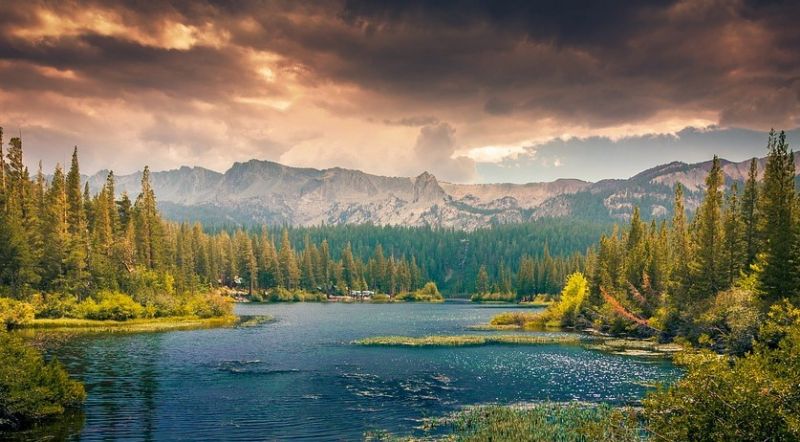Lessons from Cities that Plan for Their Rivers
Published on by Water Network Research, Official research team of The Water Network in Academic
Most of the oldest cities in the world developed around rivers because they played a major role in sustaining the city itself.
 Rivers provide water, support natural processes – like flood prevention – and provide habitats for plants and animals. These are important to the city, plants for example have a cooling effect, helping to lower surface and air temperatures by providing shade and releasing moisture into the air. They also manage floods as most of the plants species that grow on river banks absorb a lot of water, reducing flood energy which is a threat to people and buildings.
Rivers provide water, support natural processes – like flood prevention – and provide habitats for plants and animals. These are important to the city, plants for example have a cooling effect, helping to lower surface and air temperatures by providing shade and releasing moisture into the air. They also manage floods as most of the plants species that grow on river banks absorb a lot of water, reducing flood energy which is a threat to people and buildings.
Rivers also help to connect communities, create opportunities for recreation and bring people together. But we’ve observed that over time the explicit value of rivers has been ignored or overlooked by many people and policy makers.
One example is the Cheonggyecheon river in Seoul, South Korea. In the 1940s, the river became heavily polluted and because of the health risks was eventually paved over for sanitation reasons and an elevated freeway built over it. But following a massive government effort, it was restored and today is an oasis in a concrete jungle —- a boost to local biodiversity and economic development.
In Nairobi, Kenya, the government is destroying buildings constructed on riparian land in a bid to mitigate the impact of floods. This is just one example of a growing African city that hasn’t adequately protected its rivers. Kefa Otiso spoke to Jessica Kavonic, an expert in helping local governments in sub-Saharan Africa on mainstream natural assets – like rivers – into policy and planning.
In the cities you’ve worked in, did urban planning take major rivers into account?
As part of our Urban Natural Assets from Africa: Rivers for Life project, currently being implemented by ICLEI Africa, the cities we are working with are; Lilongwe (Malawi), Addis Ababa (Ethiopia), Dar es Salaam (Tanzania), Entebbe and Kampala (Uganda).
In all of these cities, the major rivers were definitely accounted for in land use plans with various guiding policies that regulate activities within and near rivers. For example, Malawi’s 1969 Water Resources Management Act stipulates that riverine areas act as buffer zones and should be protected.
What are the predominant challenges when it comes to rivers and planning cities?
Planning for rivers is one thing, but implementation is another. With the immense urbanisation and growth rate of our project cities, enforcing and regulating laws is a major challenge for them.
For instance, the Lilongwe river in Malawi is suffering due to rapid population growth and a delegation of responsibilities which has led to encroachment, in the form of cultivation and infrastructure development.
Africa is the world’s most rapidly urbanising continent. Some estimates suggest that there will be a 700% increase in urban land cover between 2000 and 2030. How this plays out on the ground will be daunting. The abuse of rivers is one area of concern. And that’s happening already.
As local governments struggle to keep up with the high levels of urbanisation, many rivers have become dumping grounds for waste. For example, the majority of Ethiopian industry is located in Addis Ababa, with a considerable number based close to rivers. In the absence of an alternative and environmental enforcement, they have become prone to discharging waste into the waterways.
Riverbanks and flood plains have also become ideal locations for settlements and urban agriculture, particularly in dry seasons. But as a result they get more pollution and siltation and their natural ability to buffer floods is compromised.
Another challenge is in the planning itself. Traditional approaches rely on mass land acquisition and centralised planning – which are not aligned with the current realities of African cities, given resource constraints and resistance from impacted landholders. Urbanisation is also happening at such a rate that land use change is occurring faster than city councils can plan.
New ways of thinking are needed which deal with the realities. For example, urban tinkering which tries to work with what is already on the ground to minimise risks and vulnerabilities, rather than create an entirely new plan for an area.
What are the three things Nairobi needs to do now?
Many African cities face the same challenges that Kenya does – not having the capacity to ensure policies are properly implemented and regulated.
But planning for rivers is less about the products produced and more about the processes followed – like creating space for dialogue. Land use planners and environmentalists need to be brought together so they can figure out alternative ways of working together.
Communities in risk zones should also be involved. These interactions sometimes offer much more beneficial, and longer term, results.
Finally, it’s important to note that the scale of challenges facing cities is far bigger than local government and requires involvement from all spheres of government and all “influencers of development”, like the private sector and affected communities.
Source: The Conversation
Media
Taxonomy
- Water Security
- Integrated Urban Water Management
- River Studies
- River Basin management
- Water Security
- Water Security
- Urban Water Supply
- Urban Water Infrastructure
- River Engineering
- urban water security